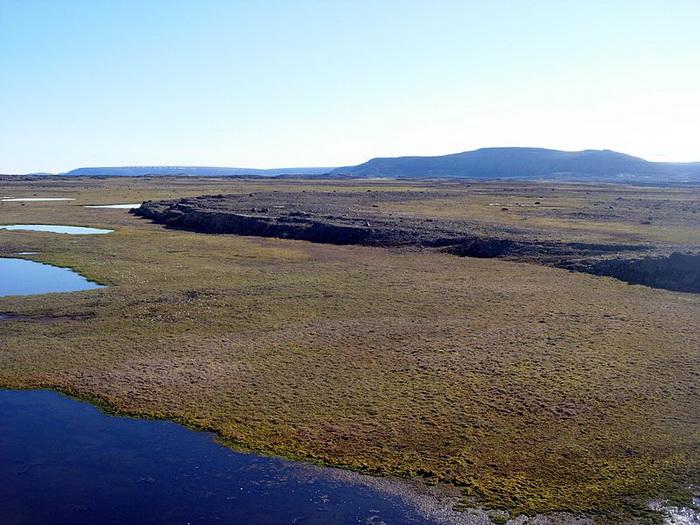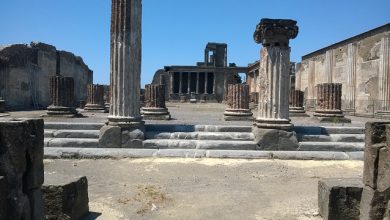Uninhabited islands, where you can’t meet a man today

How many uninhabited islands remain on Earth at the beginning of the third millennium? Units, tens? In fact, there are many more – many hundreds of these deserted pieces of land surrounded by water, both very small and larger.
Many retain their “uninhabited” status for objective reasons – excessively harsh climate, lack of vegetation and minerals, difficult living conditions. Others have been turned into reserves. Still, others succeed in the role of mysterious islands, ready to provide the random Robinson with food, freshwater, and even the secret of untold treasures.
An uninhabited island
The uninhabited island, especially rich in vegetation and fauna, in the past, was often associated with paradise, and in this capacity, it was first described in the literature. Four thousand years ago, the first “book” appeared – a papyrus about the adventures of a shipwrecked person.
The ancient Egyptian Robinson ended up on an island ruled by the Serpent. This “Tale of the Shipwrecked” became the oldest papyrus in history, under which a certain Amena was signed. So the world got the plot that subsequent generations of authors will pick up many times.
The Arabic philosophical novel “Hay ibn Yakzan” dates back to the 12th century, which tells about a young man who, it is not known how, appeared on an uninhabited island – probably born without a father and mother. The hero of the work is not bound by the need to be on his island constantly, but in the end, he returns there, disappointed from communicating with people from the big world.
But such stories were found not only in works of art. It will probably be fair to say that Daniel Defoe practically did not invent anything new, describing the adventures of his Robinson Crusoe. The brave Englishman, forced to survive far from his homeland, even had a very specific prototype who lived alone for more than four years on a real desert island.
Alexander Selkirk (or Selcraig – this is how his name was correctly spelt, which was later distorted in the ship’s documents) was a young Scottish sailor when he was landed in 1704 on the small island of Mas a Tierra, 640 kilometres off the coast of Chile. This happened as a result of a conflict with the captain of the ship. Selkirk was left with provisions and items necessary for survival.

The Scotsman was saved from further imprisonment by the English ship “Duke”, which appeared off the island’s coast four years and four months after Selkirk was in exile. This island was later named Robinson Crusoe, and one of the neighbouring islands of the archipelago is called Alexander Selkirk. By the way, none of them are uninhabited at present. On the contrary, tourists often go there, inspired by the opportunity to assess in reality the living conditions of Robinson Crusoe.
There was no shortage of Robinsons and then, and some of the stories that happened, in reality, could overshadow any literary work. In 1914, a garrison of soldiers with their wives and children landed on Clipperton Island, a coral atoll in the eastern Pacific Ocean. The nature of the island did not allow cultivation of the soil; only nine coconut palms grew on it. Therefore, the food was delivered by ship from Acapulco.
But the Mexican Revolution was going on, and once, the garrison was simply forgotten. People found themselves completely isolated on the island in the face of an acute shortage of food and, as a result, at the mercy of serious conflicts. Coconuts were given to women and children, men ate what could be found on the shore – lizards, snails, crabs, eggs of coastal birds.
Help came only three years later when an American ship approached the island. Only eleven people were saved – exclusively women and children, none of the twelve soldiers waited for salvation. Some men died in a hurricane on the island, others from scurvy. Someone tried to get off the island and failed. The keeper of the local lighthouse, who established his dictatorship on the island and killed several people, was eventually killed. Only three women and eight children made it to the mainland.
And the Ata island of the Tonga Islands archipelago became already in the 20th century a haven for wrecked teenagers – the so-called Tongan Robinsons. In 1965, six boys, ages 13 to 16, escaped from a Catholic boarding school in the capital of Tonga, Nuku’alofa, stole a boat, and set out with supplies for the voyage. The purpose of the trip was to the islands of Fiji or New Zealand. But as a result of bad weather, the boat was wrecked off the coast of Ata Island, where the Robinsons spent a total of 15 months waiting for help and providing the island’s life.
Australian fisherman Peter Warner rescued the teenagers. It turned out that all this time on the island, the fire was kept, produced in the first days after the crash, and the boys themselves were in good physical shape, even a broken leg of one of the “islanders”, resulting from the fall, healed perfectly. The teenagers worked out the rules of life on the island and adhered to them, there were practically no conflicts, they worked in shifts, getting food, collecting freshwater.
Ata Island, still uninhabited now, is located three thousand kilometres from Australia, it is the southernmost of the islands of the Kingdom of Tonga. The local flora includes coconut trees, figs and breadfruit, and the only mammal on the island is the small rat.
The population of Ata was almost completely removed from the island in 1862-1864 by Peruvian slave traders, the King of Tonga evacuated the remaining.
Uninhabited islands
Most uninhabited islands are small and unsuitable for life rocks or spaces located in an unfavourable climatic zone. But some could decorate the life of some hermit-colonist and become a family nest for a whole tribe or people.
Tetepare Island, which belongs to the Solomon Islands, is the largest in the South Pacific and is uninhabited. Its area is approximately 118 square kilometres, and its flora and fauna are very diverse. There are more than two hundred species of birds nesting on the island alone.
Scientists arrive on the island to watch birds and other animals, but there are no permanent residents there. According to scientists, Tetepare was once inhabited, and the islanders had their language and cultural characteristics, but in the middle of the 19th century, those living on the island for some reason left it.
The history of another Pacific island called Coconut near the Galapagos Islands is also fascinating. Coconut is remarkable not only for its jungle but also for its fascinating history. Once there was a pirate base on the island, it is believed that looted valuables were left there. According to various versions, Cocos Island became a repository of the Inca gold, and the wealth of Henry Morgan, and the mining of other pirates, including William Dampier, who later changed his free life to the status of a respectable English lord.

Rich in fish, with freshwater sources, the island attracted attention even in the “post-pirate” era. But neither the newly founded colony nor the prison took root there, and now Coconut continues to perform its main function – to attract tourists hunting for treasures.
The largest uninhabited island on the planet is Devon, with an area of 55 thousand square meters. It is close to Croatia. Devon Island is part of the Canadian Arctic Archipelago. It’s hard to live there – it’s too cold. Inuit tried to settle on the island in 1934: 53 families lived for several years in Devon but eventually left the inhospitable land. But thanks to the natural conditions, this island attracted the attention of those who are captured by the ideas of the upcoming colonization of Mars. In 2004, experiments were carried out on Devon to simulate the conditions of life on the fourth planet.





